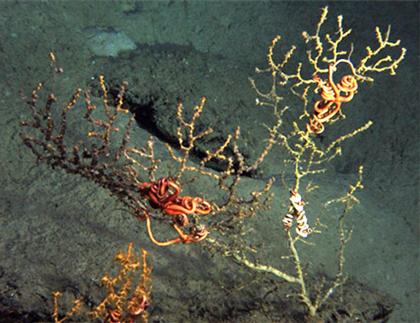13 April 2011 | Nature 472, 152-154 (2011) |by, Mark Schrope
The Gulf of Mexico oil spill set records for its size and depth. A year on, the biggest impacts seem to be where they are hardest to spot.
Late last year, oceanographers prowling the sea floor of the Gulf of Mexico came upon what looked like a crime scene. Cameras on a remotely operated vehicle revealed corpses of deepwater coral covered in brown goo. As the researchers watching from above saw one grim scene after another, “the whole place got silent, everything totally stopped”, says Tim Shank an oceanographer from the Woods Hole Oceanographic Institution in Massachusetts, and a member of the survey team.
The field of coral was just 11 kilometres from the Deepwater Horizon well head, which earlier in the year had spewed out more than 4 million barrels of oil and a similar amount of methane — the largest ever accidental release in the ocean. The spill was unique in other ways, too. Located beyond the continental shelf and some 1,400 metres below the surface, it happened in deeper water than any other major spill in history. Read the full article
